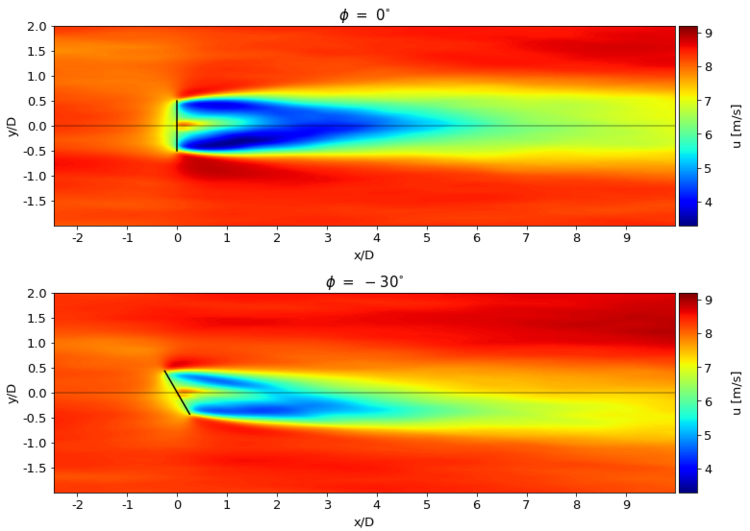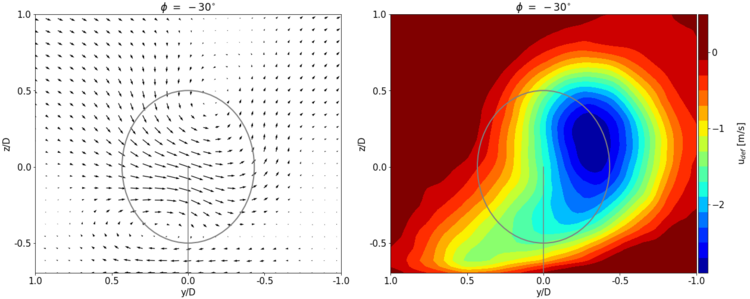Wind farm control under meteorological aspects
Ansprechpartner
Universität Oldenburg
Institut für Physik - ForWind
Dr. Gerald Steinfeld
Küpkersweg 70
D-26129 Oldenburg
Tel: +49 (0)441 / 798-5073
Email: gerald.steinfeld@uol.de
Wind farm control under meteorological aspects
A more detailed understanding of the dynamic properties of the turbine wake under yaw misalignment
Because of increased awareness of the effects of the turbine wake in wind farms, lately the focus has shifted from optimal control of individual turbines to optimization of the entire wind farm. One promising approach is the so-called Wake Redirection Control (WRC). It aims to deflect the wake by a deliberate yaw misalignment of the upstream turbine, which will introduce a lateral thrust force component and consequently alters the wake’s trajectory, as illustrated in Figure 1.

The introduced lateral thrust force component creates two counter-rotating vortices near to upper and lower tip height. When these vortices are sufficiently strong and persist long enough, this results in a deformation of the wake into a kidney-like shape (see Figure 2).

In order to exploit the WRC method, a more detailed understanding of the effect of meteorological (and mechanical) parameters on the dynamic propagation of the turbine wake is necessary. Literature reports a wide range of potential parameters, such as atmospheric stability, ambient turbulence intensity, wind veer and shear. Ongoing research aims to identify the most relevant parameters and to quantify their effect on the dynamic wake properties. These include more traditional variables, such as wake center displacement and available power for a virtual downstream turbine, but also newly introduced measures to describe the characteristics of a wake developing under yaw misalignment. This analysis is done by utilizing the Large-Eddy Simulation model PALM.
This newfound information will be validated using data from a measurement campaign that takes place as part of the CompactWindII project. Once validated, this information can be used in a new controller to optimize the applicability of the WRC method in practice.
